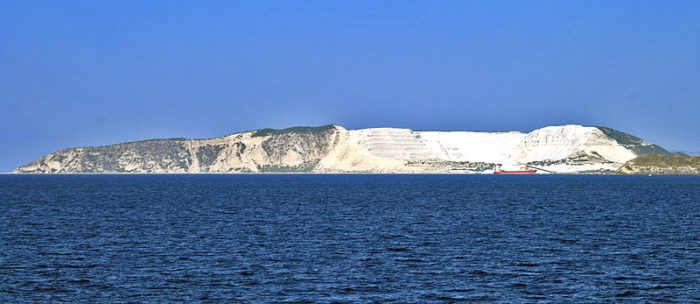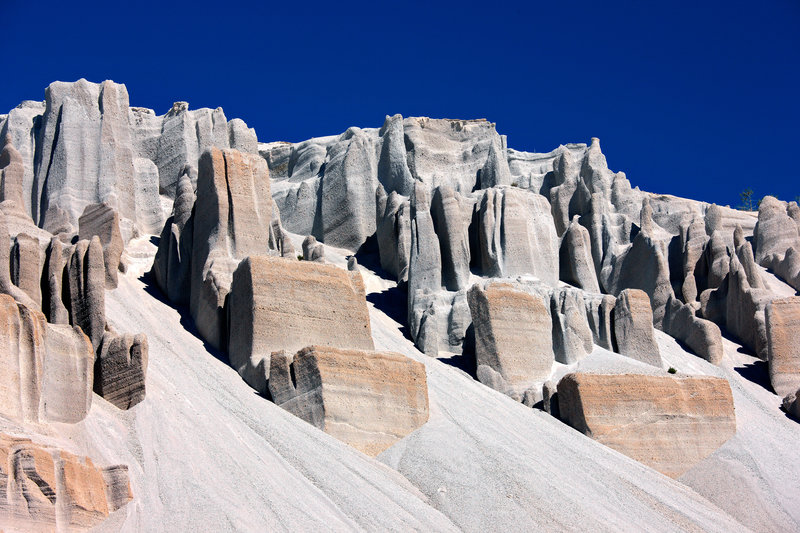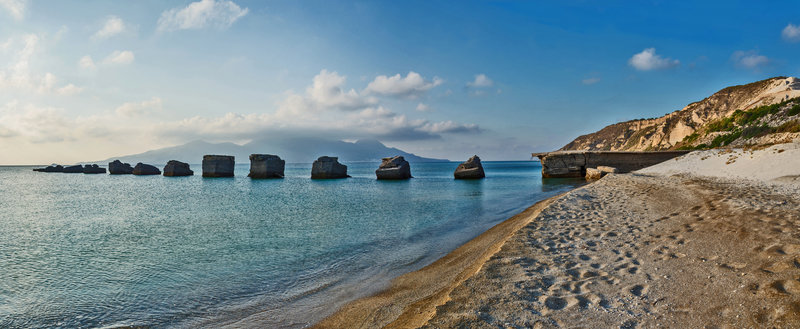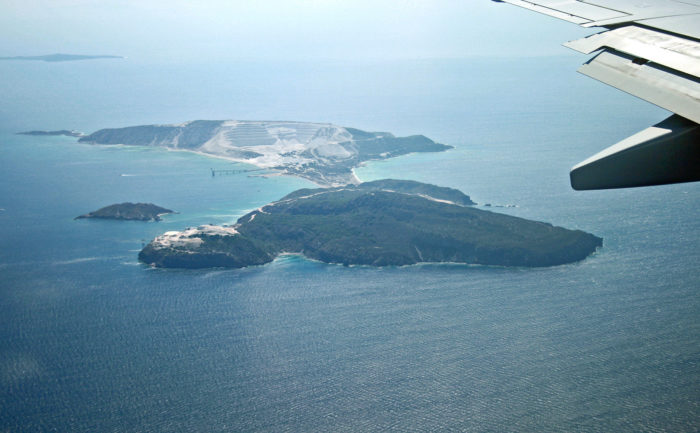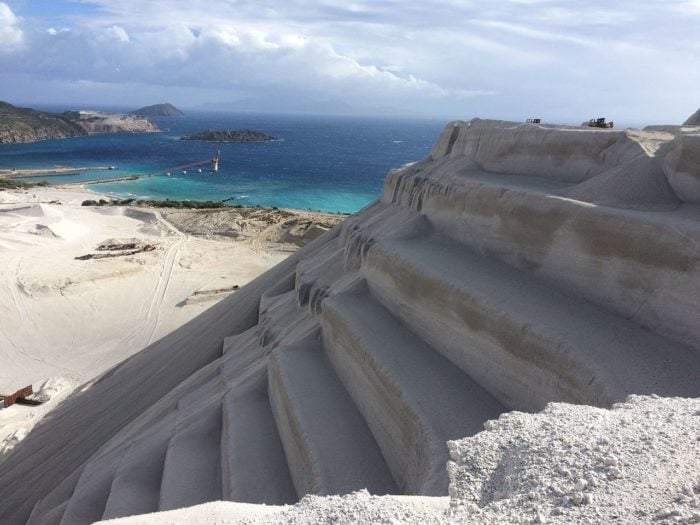The Greek island of Gyali — located less than ten kilometers (six miles) from Turkey and half way between Kos and Nisyros — brings together all these wonderful features that not many people are aware of.
Gyali, (meaning glass in Greek) is a volcanic island in the Dodecanese, whose soil is mainly composed of rhyolitic obsidian lava and pumice deposits.
Although only about 20 people live on the island permanently, workers usually flock over to Gyali to work in the open mines of the island.
These mines deeply affect the landscape, creating breathtaking contrasts
between beautiful green pine forests, turquoise waters, and the white soil. A scenario which has been rightfully declared Landscape of Natural Beauty.
The island of Gyali has a history of its own, as well. Among the different findings, visitors will notice that there are remains of a settlement of the Final Neolithic Period (4000 BC), as well as metal objects that show very early stages of metallurgy (6000 BC).
Incredible coves, inaccessible by road beaches, and lonely shores bathed with unique clear waters can be found on the southern coast of the island. Excursion boats offer day trips to visitors to enjoy one of the most heavenly and less known islands of Greece.
See all the latest news from Greece and the world at Greekreporter.com. Contact our newsroom to report an update or send your story, photos and videos. Follow GR on Google News and subscribe here to our daily email!



